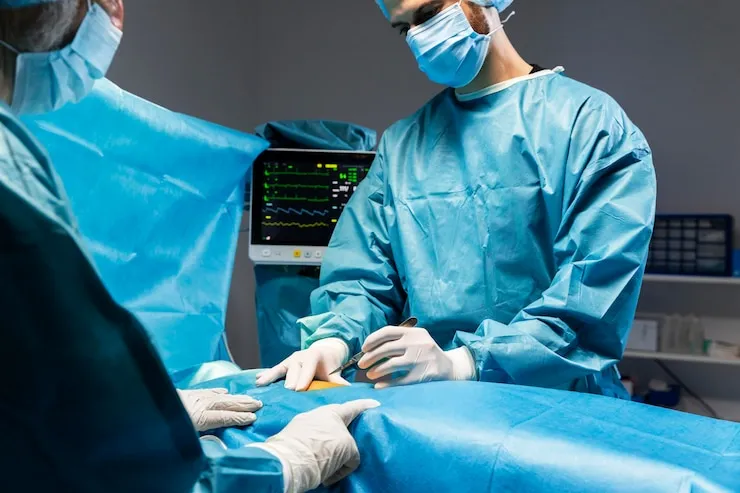Aaron Jackson
Microdiscectomy vs Discectomy: Understanding Your Back Surgery & Treatments
Back pain is a common complaint, affecting millions of people worldwide. While most back pain resolves on its own with time and self-care, herniated discs can cause significant discomfort and require medical intervention. This article delves into two surgical procedures used to address herniated discs: Microdiscectomy and Discectomy. We'll explore the differences between these techniques, discuss treatment options beyond surgery, and equip you with the knowledge to make informed decisions about your back health.
What is a Herniated Disc?
The spine is a complex structure made up of vertebrae (bones), discs, muscles, ligaments, and nerves. Discs act as cushions between the vertebrae, providing flexibility and absorbing shock during movement. Each disc has a tough outer layer (annulus fibrosus) and a soft inner core (nucleus pulposus).
A herniated disc occurs when the outer layer of the disc weakens or tears, allowing the soft inner core to bulge or leak out. This bulging disc material can compress nearby spinal nerves, leading to pain, numbness, tingling, and weakness in the legs or buttocks, depending on the location of the herniation.
Microdiscectomy vs. Discectomy: Understanding the Differences
Microdiscectomy and Discectomy are both surgical procedures used to treat herniated discs. However, they differ in their approach and invasiveness.
Microdiscectomy
Microdiscectomy is a minimally invasive surgical technique performed through a small incision in the back. A microscope or surgical loupes are used to magnify the surgical field, allowing the surgeon to precisely remove a small portion of the herniated disc material compressing the nerve. This procedure aims to alleviate the pressure on the nerve and reduce pain symptoms.
Benefits of Microdiscectomy:
- Minimally invasive with a smaller incision, leading to less tissue disruption and faster recovery.
- Uses magnification for precise removal of disc material, minimizing damage to surrounding structures.
- Typically shorter hospital stay and quicker return to daily activities.

Potential drawbacks of Microdiscectomy:
- Requires specialized surgical skills and equipment.
- Not suitable for all herniated discs, particularly large or complex ones.
- May require additional surgery if the herniation recurs.
Discectomy
Discectomy is a more traditional surgical approach used to treat herniated discs. It involves a larger incision in the back, and the surgeon may need to remove a portion of bone or muscle to access the herniated disc. The surgeon then removes the entire disc or a significant portion of it to relieve pressure on the nerve.
Benefits of Discectomy:
- Effective for more complex or extensive disc herniations.
- May be a faster option for some surgeons due to the larger working area.
Potential drawbacks of Discectomy:
- More invasive procedure with a larger incision, leading to longer recovery times.
- Increased risk of bleeding and infection compared to microdiscectomy.
- Potential for greater post-operative pain and muscle weakness.
Choosing the Right Treatment Option
The choice between microdiscectomy and discectom1y depends on several factors, including:

- The severity and location of the herniated disc
- Your overall health and medical history
- The surgeon's experience and expertise
Here's a general guide:
- Microdiscectomy: Preferred for most herniated disc cases due to its minimally invasive nature and quicker recovery.
- Discectomy: May be considered for large or complex herniations, or if the surgeon has more experience with this approach.
It's crucial to discuss your individual situation with a qualified spine surgeon to determine the best surgical option for you.
Non-Surgical Treatment Options for Herniated Discs
Surgery isn't always the first line of treatment for herniated discs. In many cases, conservative management can effectively alleviate pain and improve symptoms. These options include:
- Rest: Limiting activities that aggravate the pain can allow for natural healing of the disc.
- Physical Therapy: Specific exercises can strengthen core muscles, improve posture, and reduce pressure on the spine.
- Medication: Over-the-counter pain relievers, muscle relaxants, or anti-inflammatory medications can help manage pain and inflammation.
- Steroid injections: Corticosteroid injections can reduce inflammation around the nerve root and alleviate pain temporarily.
- Alternative therapies: Therapies like acupuncture, massage therapy, and yoga may provide some pain relief and improve flexibility.

 Telehealth Visits Available
Telehealth Visits Available
